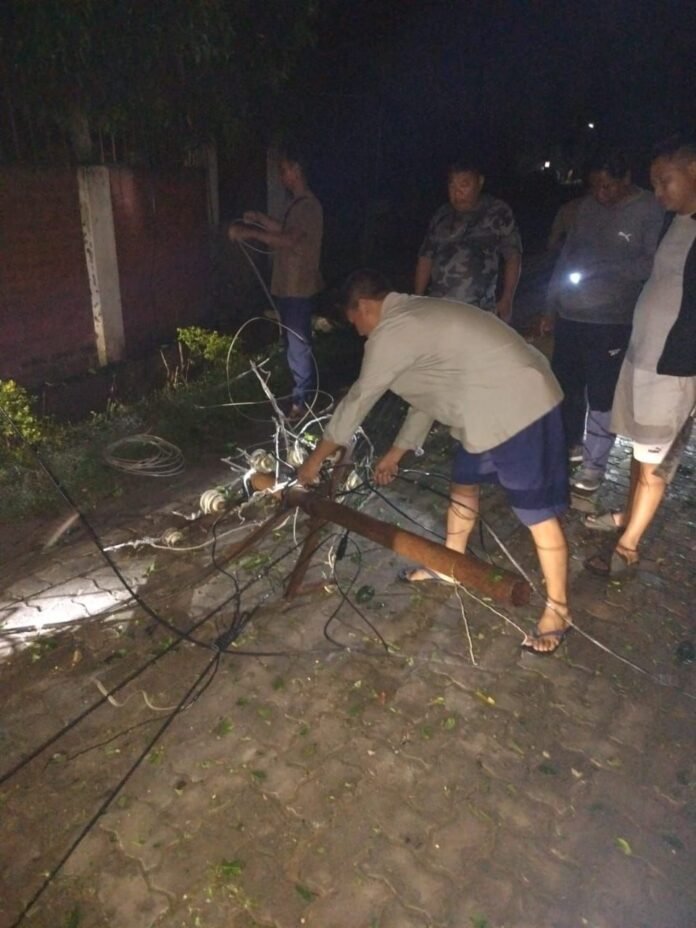Nagaland has recently been besieged by the wrath of nature in the form of heavy rainstorms, wreaking havoc on its infrastructure and disrupting the lives of its inhabitants. The torrential downpour, accompanied by strong winds and lightning, has left a trail of destruction across the state, underscoring the urgent need for resilience and preparedness in the face of natural calamities.
The impact of the heavy rainstorms on Nagaland’s infrastructure has been severe and far-reaching. Roads, bridges, and culverts have been washed away or severely damaged, impeding transportation and connectivity in many parts of the state. Remote villages and rural areas, already challenged by limited access to essential services, have been particularly hard hit, exacerbating the plight of vulnerable communities.
The power infrastructure in Nagaland has also borne the brunt of the rainstorm fury, with widespread disruptions in electricity supply reported across the state. Fallen trees, damaged power lines, and flooded substations have contributed to power outages, plunging many areas into darkness and exacerbating the challenges faced by residents, especially during the nighttime.
Furthermore, the heavy rainfall has triggered landslides and mudslides in hilly terrain, posing grave threats to lives and properties. Vulnerable settlements perched on hillsides are particularly susceptible to such natural hazards, putting residents at risk of displacement and loss of livelihoods. The incessant rains have saturated the soil, making it prone to erosion and instability, exacerbating the risk of landslides in landslide-prone areas.
The agricultural sector, which forms the backbone of Nagaland’s economy and sustains the livelihoods of a significant portion of its population, has also suffered considerable damage due to the rainstorms. Flooded fields, waterlogged crops, and damaged irrigation systems have dealt a severe blow to farmers, jeopardizing their harvests and livelihoods. The loss of agricultural produce not only affects the food security of the state but also has long-term implications for the economy and the well-being of rural communities.
In urban areas, the rainstorms have inundated streets and residential areas, causing waterlogging and drainage congestion. Flooded homes, damaged property, and disrupted public services have added to the woes of city dwellers already grappling with the challenges of urban living. The inundation of urban infrastructure poses health risks due to waterborne diseases and sanitation concerns, further compounding the impact of the rainstorms on public health and well-being.
Amidst the chaos and devastation wrought by the rainstorms, the resilience and solidarity of the people of Nagaland have shone through. Communities have come together to assist those in need, offering shelter, food, and support to the affected individuals and families. Civil society organizations, local authorities, and government agencies have mobilized relief efforts, providing emergency assistance and humanitarian aid to alleviate the suffering of the affected populace.
In the wake of the rainstorm-induced infrastructure damage, the need for robust disaster preparedness and mitigation measures in Nagaland has become increasingly apparent. Investing in resilient infrastructure, early warning systems, and disaster response mechanisms is crucial to minimizing the impact of natural disasters and safeguarding the lives and livelihoods of the state’s residents.
Moreover, there is a pressing need for concerted efforts to address the underlying vulnerabilities and systemic challenges that exacerbate the impact of natural disasters in Nagaland. Enhancing climate resilience, promoting sustainable development practices, and integrating disaster risk reduction into development planning are essential steps towards building a more resilient and sustainable future for the state.
As Nagaland grapples with the aftermath of the heavy rainstorms and endeavors to rebuild its infrastructure and communities, it is imperative that all stakeholders work together in a spirit of cooperation and solidarity. By prioritizing resilience, preparedness, and sustainable development, Nagaland can emerge stronger from the devastation wrought by the rainstorms and chart a course towards a more prosperous and resilient future for all its inhabitants.




